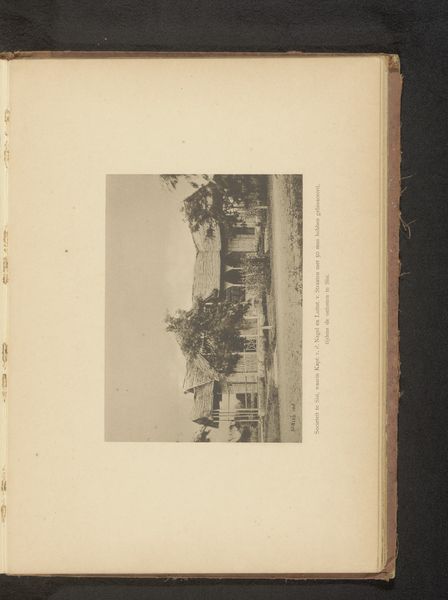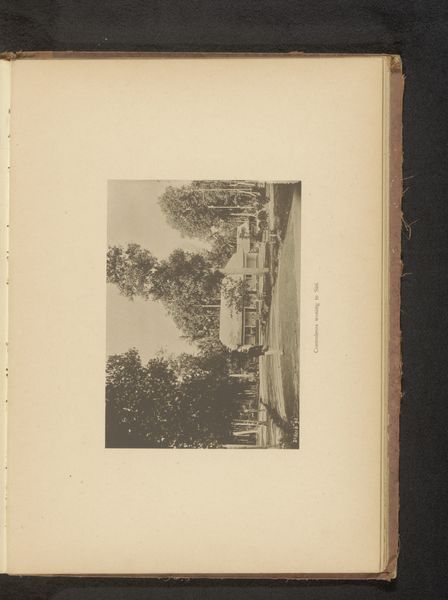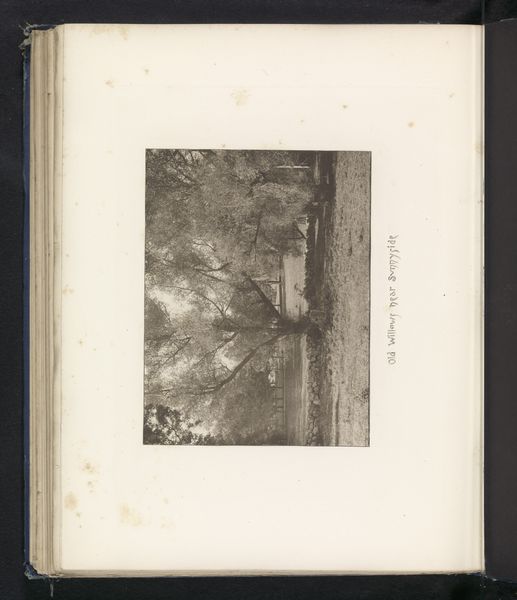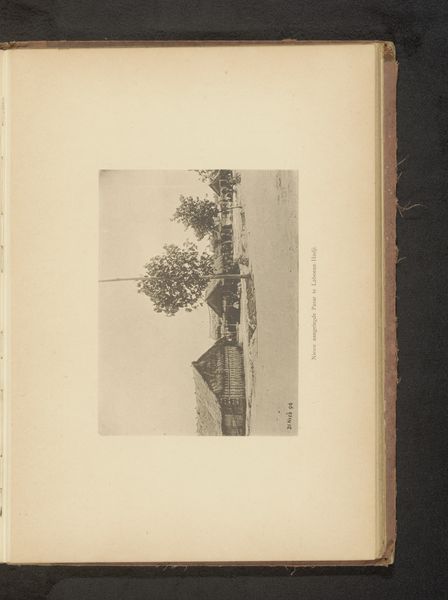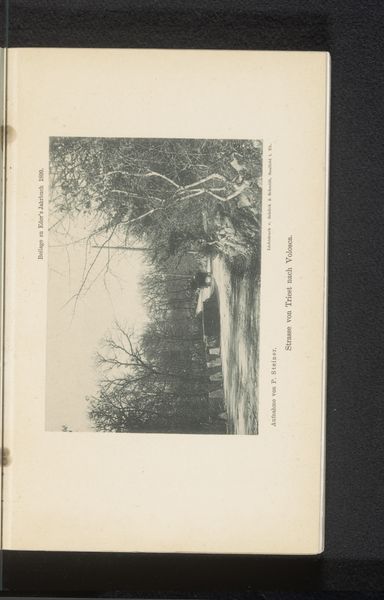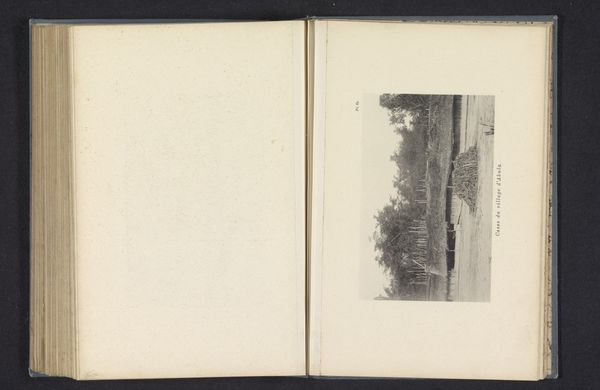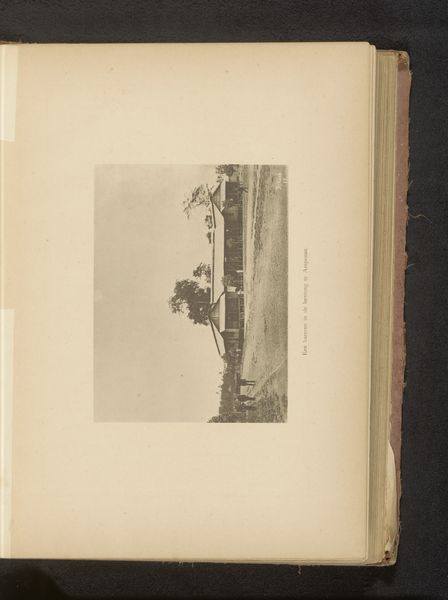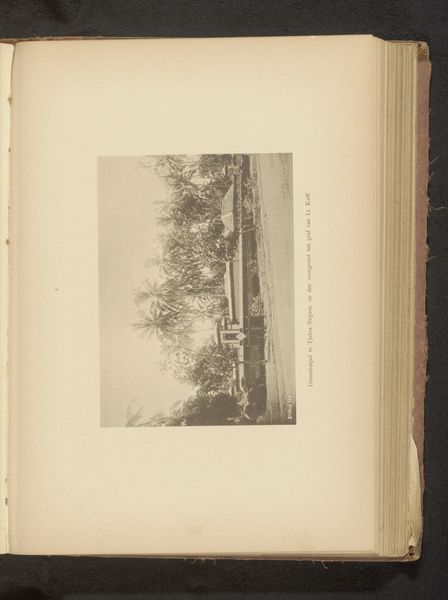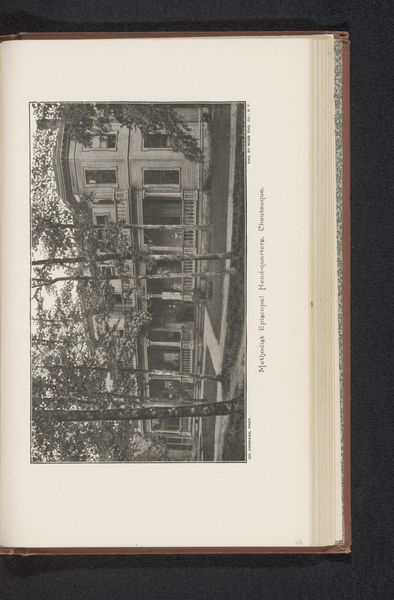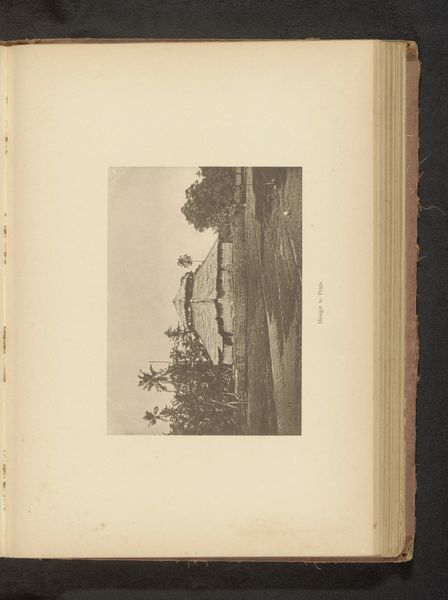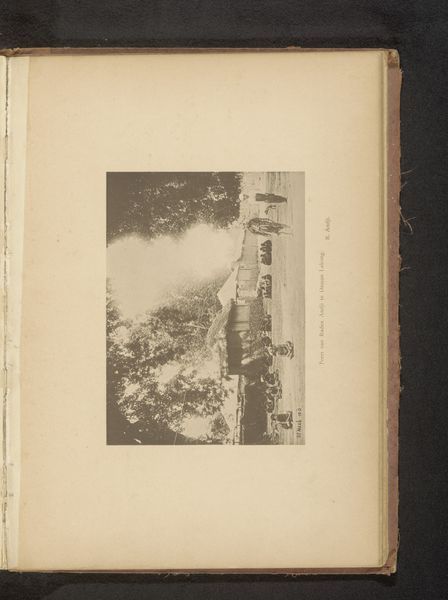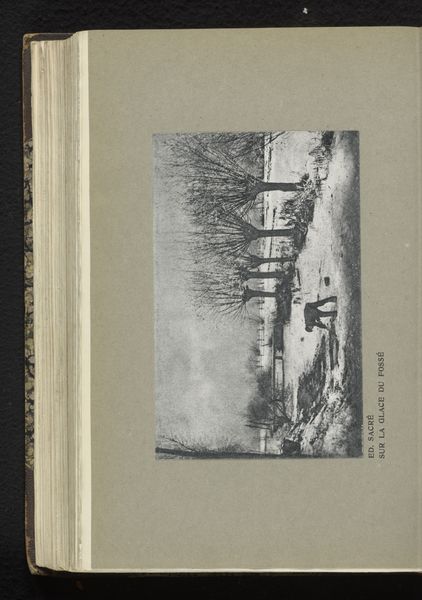
print, photography
# print
#
landscape
#
photography
#
cityscape
Dimensions: height 94 mm, width 152 mm
Copyright: Rijks Museum: Open Domain
Curator: Before us, we have a cityscape photograph called "Stadsgezicht op Angre," taken before 1902, captured anonymously. It gives us an evocative look into a past landscape. Editor: My first thought is how stark the contrasts are, particularly between the building materials and the trees. It creates almost a study of textures, a tactile experience of a time long past. Curator: Given its age, the print offers an important perspective on early photographic techniques, where mastering the print process would’ve been critical to achieving a high quality final product. Think of the social impact, bringing previously exclusive landscape artforms to broader, more accessible audiences. Editor: Absolutely, and I’d add the work likely captures a moment of considerable social and political shift, specifically industrialization impacting daily lives, rural or not. I am also reminded that the location and artist are, essentially, invisible within traditional art historical contexts, obscuring not only identity but historical presence as well. Curator: Anonymity of the photographer pushes me to focus on the physical creation and purpose of such a print. It makes me wonder: what kind of camera and printing methods were used to capture that sort of textural range and resolution at that moment? Was this an attempt to capture history, or simply for the aesthetics and sales to be mass produced? Editor: Maybe it served multiple purposes. The print provided information and perhaps stirred emotions as well. How did urban/rural dynamics create societal values, and how might have gender or ethnicity impacted the scene being created? Such factors aren't just interesting details; they change the very meaning embedded into images such as these. Curator: Focusing on the artistic work as an artifact shows that something was created during that time using specific means to reflect not just aesthetics but also societal expectations as art democratized and started becoming easier for average persons to get. Editor: Exactly. Art wasn't simply hung inside fancy parlors; it impacted the material lives of society, representing history from many potential voices. Seeing that impact reminds us how art creates social transformation, pushing traditional bounds to tell numerous, interlocking narratives. Curator: Thank you; examining materials offers insight into technological and societal impacts present during their initial construction and eventual dispersal throughout various locations/social interactions. Editor: And seeing it provides a powerful lens on social justice, remembering the work that happened and lives impacted behind-the-scenes during eras we often discuss.
Comments
No comments
Be the first to comment and join the conversation on the ultimate creative platform.
